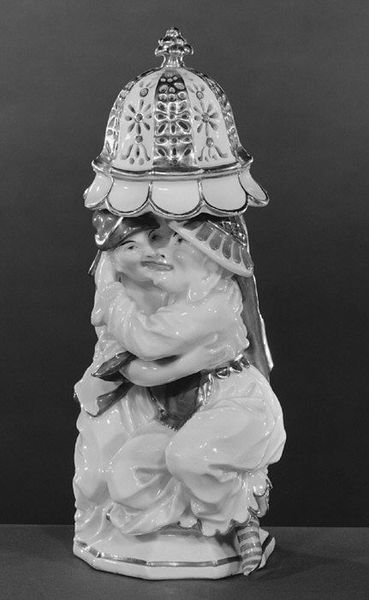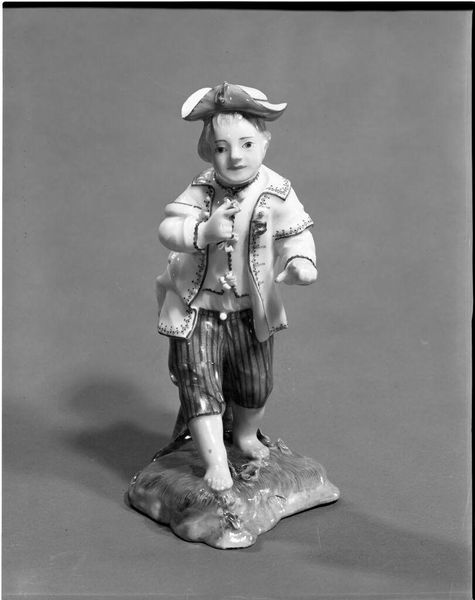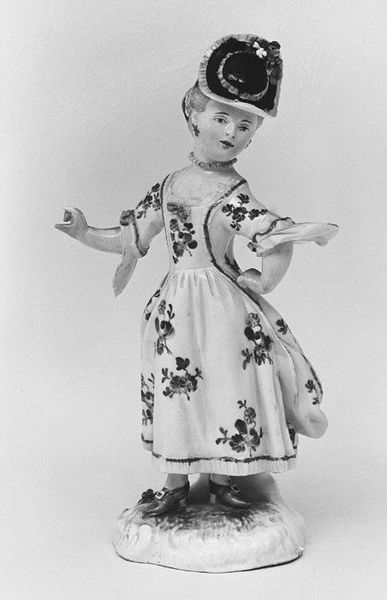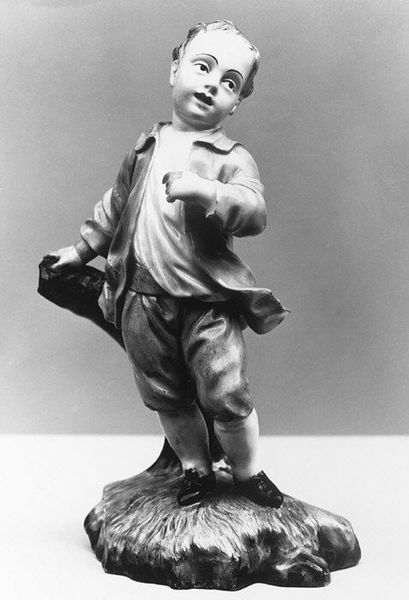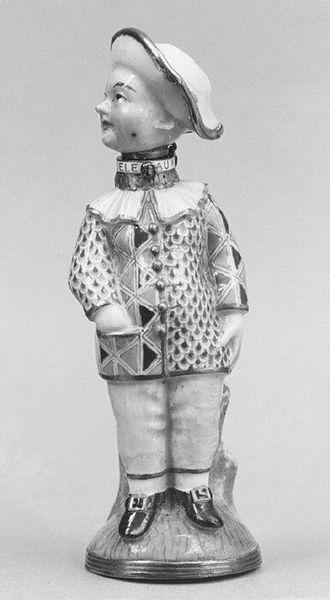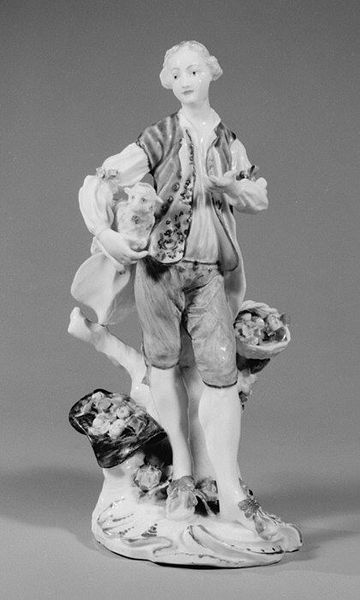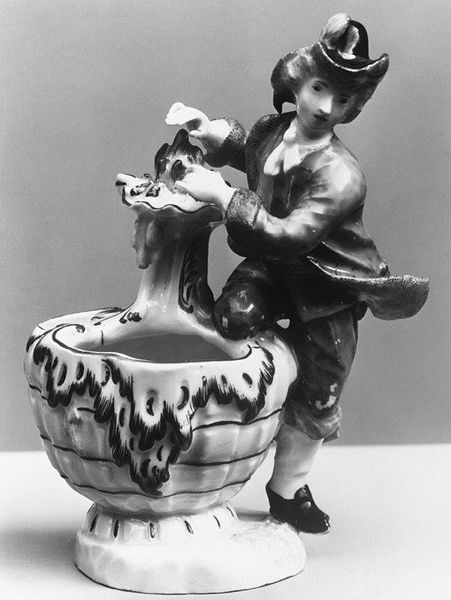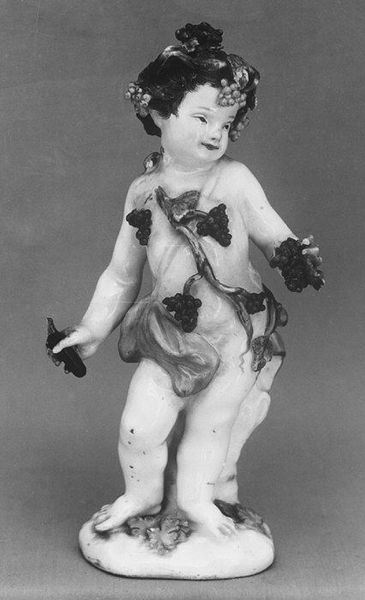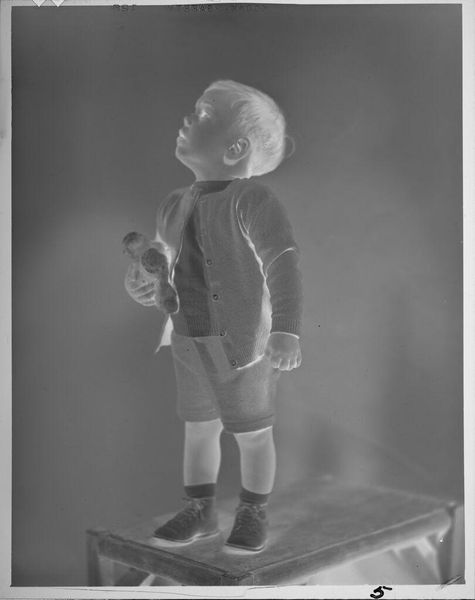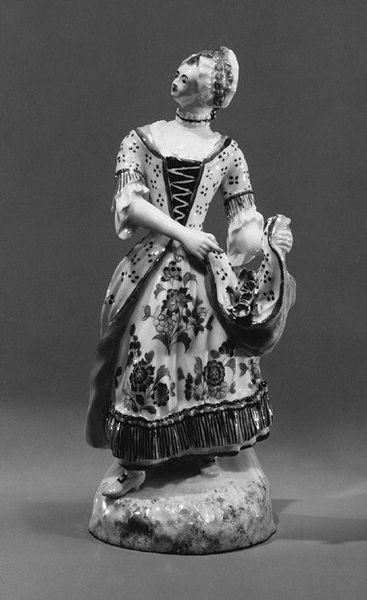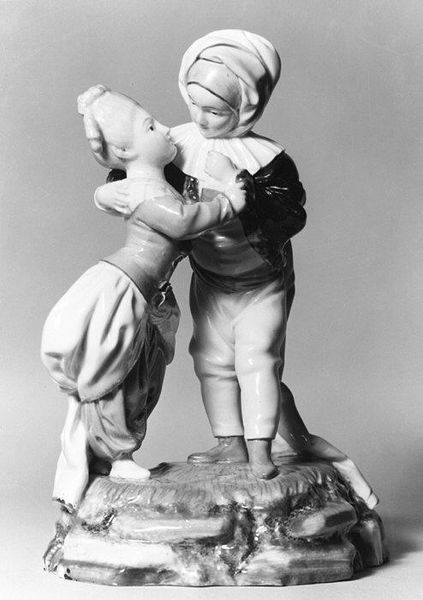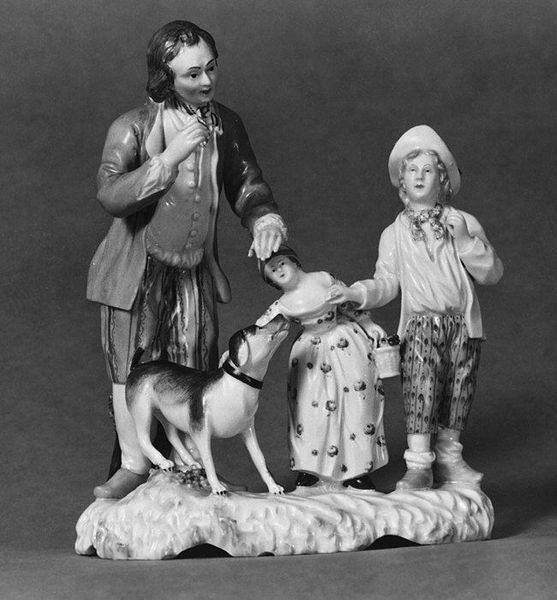
Boy with a basket of flowers 1762 - 1775
0:00
0:00
ceramic, porcelain, sculpture
#
ceramic
#
porcelain
#
figuration
#
sculpture
#
decorative-art
#
rococo
Dimensions: Height: 6 in. (15.2 cm)
Copyright: Public Domain
This is a porcelain sculpture of a boy with a basket of flowers, made at the Pfalz-Zweibrücken Porcelain Manufactory in the late 18th century. During this time, porcelain manufactories were often patronized by royalty and aristocracy. Figures like this one were purely decorative, signs of wealth and refinement intended to display their owner’s cultivated taste. Consider the boy’s clothing and hat. These visual cues tell us something about how the artist intended to portray him. Is he a peasant or a member of the middle class? Looking at costume books and trade records, we can infer that the boy isn't wealthy. The boy’s features suggest a romanticized image of rural life and labor, perhaps made to appeal to the elite who did not have to engage in such labor themselves. Art historians use a variety of resources to understand the original context in which artworks were created. What does this object tell us about the social and economic structures of its time?
Comments
No comments
Be the first to comment and join the conversation on the ultimate creative platform.
